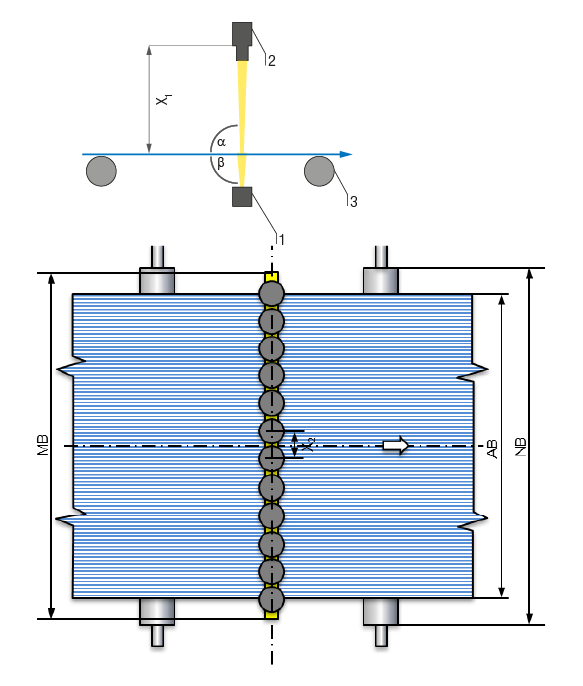- Description
- Function drawing
Function
An "EPI camera array" consists of a series of cameras fitted transversely over the calender material. Each camera determines the position of each individual cord in its field of view. The application creates a cord distribution curve and indicates the position of the left and right material edge and the position of the center cord. The position of the center cord is determined by counting all cords and halving the total number of cords. Alternatively, the center cord is marked by a cord with double thickness (two combined cords) and the camera searches for this doublethickness cord. The camera array detects double or missing cords.
Area of use
The cord distribution system is used on calender lines immediately before the calender.
Application
An EPI system ensures that the material has the required total width and uniform cord distribution. A typical EPI system consists of a web guiding system SRB63, a spreading device BCB31 and an edge spreading system BCB11. This composite system is intended to counteract the natural tendency of the material to become narrower and thicker when subject to tension in the direction of web travel.

Legend
AB = Operating width | MB = Measuring range | NB = Nominal width | X1 = Distance, web surface – cameras | X2 = Distance, cameras | α = Angle, web surface – camera | b = Angle, web surface – light transmitter | 1 = Light transmitter | 2 = CCD line scan camera | 3 = Guide roller


